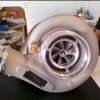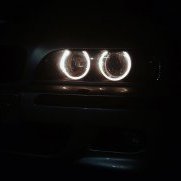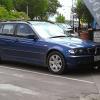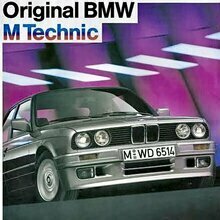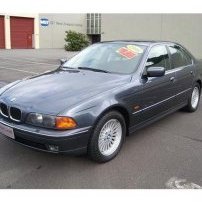Leaderboard
Popular Content
Showing content with the highest reputation on 12/28/20 in Posts
-
3 pointsA bit on cosmetics today, more mirror covers, door handles, and right sill. More sanding and filling on spare bumpers as well. Took the car to Auckland yesterday to have @BreakMyWindow run his DIS diagnostics over the engine and vanos. All is well. There is a little "miss" at cruising speed and Martin reckons it's the torque convertor dropping slightly out of lockup and picking up again. That with the 5-4 jolty downshift is a warranty issue so in time I'll be having a chat to my transmission shop, but getting more km under it first.
-
2 pointsLoved the weather over my Xmas break. It's looking typical for my next stint after New Years too. When summer finally hits in March for a week or so I look forward to getting out and about. I missed the snow. But I didn't want it to snow here ffs.
-
2 pointsHere's a few photo's of bits of the system: Main Speaker: The speaker is 1.8m tall and has no parallel sides + the sides are curved and taper in thickness - no standing waves or resonances are present due to every panel being irregular in shape and thickness. There's an internal matrix to add extra stiffness and create tunnels to absorb all rear speaker radiation by packing the tunnels with progressively dense absorption material. Sub: Above the sub is a 55" TV to give some idea of size - it weighs 330kg. The sub also has an internal matrix to stiffen the sides, top and bottom. The matrix is on 100mm x 100mm centers. It's a stereo sub with a separation down the middle with each half having 2 x 18" driver. Because it's 4th order bandpass you only see the port for each channel. DSP Processor: The DSP is an Analog Devices ADSP21469. There's an Intel NUC PC included as a media player using J-River. The DAC's are PCM1794A with AD797 V/I converters and LT1028 LPF in a balanced non-earth filter arrangement. The volume controls are PGA4311, again balanced with no earth. The 10 x DAC outputs are balanced 600 Ohm. Interconnects are Mogami Starquad into a 600 Ohms balanced input on the amp per channel. The V/I and filter Opamps, R's and C's are under the black heatsink as they run quite high bias and need forced cooling. There's some squishy thermal pad between the heatsink and components. The sound card is a M2Tech HiFace modified with analogue supplies to reduce jitter and the I²S signals are directly tapped off USB chip to the DSP so there's no conversion to SPDIF and back. Power Supply: The amps are: Tweeter: 350W Mosfet 8 Ohms Mid: 350W Mosfet 8 Ohms Lower Mid: 700W Mosfet 4 Ohms Bass: 1250W Mosfet 4 Ohms Sub: 2500W Mosfet 2 Ohms The reason the amps are so big isn't to make the system loud - it's to have 2x the voltage required to apply speaker correction to properly control cone movement and overcome the voice-coil inductance.
-
2 points
-
1 pointwww. kleinanzeigen.de. Offshoot of Ebay germany, a proper a trading platform. Bit like trade me, and local only to Germany. Most posters answer promptly and politely, and speak good english. If not google translate is your friend
-
1 pointGood luck with the search. I have only ever seen 2 sets for same ever in NZ, and know of one other set
-
1 pointSorted the broken drivers seat plastic surround today. Broken either by previous owner or upholstery guys, needless to say the latter didn’t help matters as it seriously deteriorated after they had their hands in it. I ordered a set from Schmeidmann they only come as a pair but the price was reasonable even from Germany. install took about 40 mins including removing the old one and transferring all the switches etc. am now looks super fresh and has all clips and bolts in their rightful place. I noted the thigh support switch was missing a component and was incorrectly assembled (the switch cover itself can only go one way). But the small gold coloured metal pieces can fall out easily if not assembled properly. so I robbed a part from the passenger seat. if anyone has a thigh support switch lying around let me know.
-
1 point
-
1 pointBit of screwing around with the wrong sized mandrels, need 85mm to fit the bearing and universal kit only went to up 82mm.. KB Motorsport is a legend. Bearings replaced, pretty straight forwards with the right tools. Bit of a clean up of bores and lick of rust converter and good for another 300,000km. Getting handbrake cables out requires undoing a lot of stuff just to get to the balance bar, but otherwise easy to replace.
-
1 point
-
1 pointWasn’t it listed for someone like $14000 ono in March on trademe?
-
1 pointYeah, a progress update would be good. If I'd seen this a few years ago when started I would have suggested what I've written below. Considering improving the factory system in my E36... I'd second going active as it's the best and really the only way to get a fast dynamic response. It also opens up the possibility to properly add DSP based correction and active crossovers to the system. I'm not sure if pre-amp level programmable DSP based crossovers are available with FIR capability for the car audio market. You need something you can add your own FIR coefficients to and it must have programmable delays. With a decent DSP system you can get amazing results. I also second Morel. These guys make amazing drivers with most of the design engineers ex Dynaudio. Most of their older drivers look exactly like Dynaudio... I started a home audio project back in 99 which was completed about 3 years ago. It's a 5-way active system with a sub and 2 x 4-way towers. The sub uses 2 x RCF L18P200KN drivers in an isobaric 4th order bandpass tuned for bandwidth, not peak. This puts the -3dB points at 13Hz and 90Hz with 0.7dB ripple in the passband. With 2 of these I can easily achieve 120dBA at 20Hz. The crossover points are 70, 280, 1120 & 4480 Hz, all 80dB/oct FIR with under 0.1dB pre-ringing and the highest peak in the stop-band -96dB. The bass driver is Morel Ultimo 124 car sub which has typically 0.1% distortion across the frequency range it's used in (70-280Hz @ 95dBA). The lower-mid is Dynaudio 15W75, Mid Dynaudio Esotar M560D and Tweeter Dynaudio T330D. All drivers can peak at 120dBA without compression. Another thing you can do if you get a programmable DSP is perform partial transfer function correction of the drivers. You measure the driver transient response which shows you the mathematical relationship between the electrical signal and what the driver does. You then invert this, apply a low-pass filter to the result (so you don't need infinite power) and apply it to the DSP. Think of the speaker cone a block of concrete and the voice-coil inductance as a spring attached to the block of concrete. If you instantly push the back of the spring in 100mm and hold it then instantaneously the concrete does nothing. It then begins to accelerate due to the force from the spring. It eventually reaches the 100mm point but because it now has momentum it over shoots and keeps going. The force from the spring now inverts and start to pull the block back. The end result is the block bounces around on the spring for a while slowly diminishing until it eventually settles at 100mm from where it started. The same thing happens to speaker cones. Using the DSP you can almost completely remove this damped ringing to compensate for the physical limitations of the driver. Another cool thing you can do with the DSP is add thermal modelling for the voice coils and excursion modelling for the cones to limit the system so it never operates outside the maximums. Lastly, you can do room correction with the DSP box (if it has enough processing power). A lot of DSP based room correction is done using FIR but I find this destroys the sound stage and makes the music sound dead. This is possibly because FIR cannot fix the decayed ringing natural room reflections produce - they target the first reflection well but often don't address the ringing. Instead I use IIR based parametric EQ which behaves the same way natural ringing does. It preserves the soundstage while allowing the room to be corrected to within 0.5dB. You might need up to 40 bands per channel to get a good response though - depending on the room. You may not need this many bands in a car. The end result is a system that's very fast, has very low distortion, near-perfect timing, amazing imaging and sounds natural (like live music). It also adds very little of it's own character to the sound which some people don't like as they're used to hearing the distortion most speakers add - sometimes this can even be quite pleasant). I built my own DSP processor with 10 output DAC's as nothing was available commercially with features I needed when I started the project. Most likely something is available now for car audio with many/most of these features. You could also partially DIY a DSP box using parts and software from MiniDSP. Of course, this might also be outside your budget...
-
1 point
-
1 point
-
1 point
-
1 point
-
1 pointChanging of the guard? The Marc VDS Z4 GT3 being chased by the Rowe Racing SLS AMG GT3 around the Karussell during the 2015 edition of the Nurburgring 24hr race. Several slow zones around the track caught out many competitors and Marc VDS lost the race after being penalised in controversial circumstances which handed the win to Audi Team WRT, the only other car on the lead lap. Marc VDS would pull out of sports car racing entirely due to this incident. Rowe Racing would swap their Merc's for BMW's in 2016, and after being the only BMW in a Mercedes top 6 sandwich in 2016, a second in 2017 splitting a pair of Audi's, and a pair of double DNF's in 2018 and '19, which included the ignominy of both cars being out after 22 laps in 2019, they'd stand on the top step in 2020 and break BMW's 10 year drought at the green hell.
-
1 pointFound this quite amusing, but kind of true. Apologies if it offends anybody.

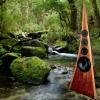

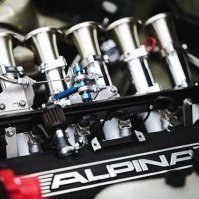
.thumb.jpg.04807d42ad69838062fa7df5f4a7a884.jpg)
